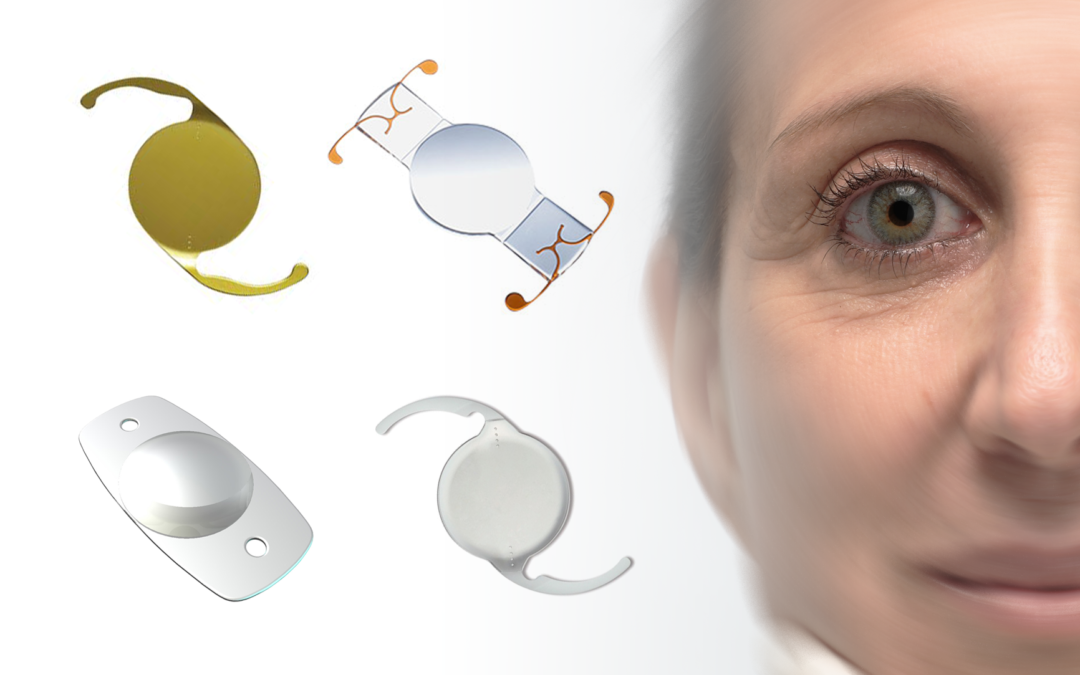Most of the population knows what it is, cataract surgery and refractive lensectomy. Currently these are the usual techniques to eliminate or minimize the use of glasses, starting at the age when presbyopia begins.
LASIK and PRK with Excimer laser are two of the most used techniques for all of our patients. But since the corresponding technology appeared, they have been losing ground to make way for the use of intraocular lenses.
This is because the laser can only eliminate the diopters that the patient has for far vision, but it does not eliminate presbyopia or eyestrain. Years ago and, when there were no other options, this was used for groups of all ages, warning that, from the age of 45, the use of reading glasses would be necessary, but currently and with the development of this new technology, this indication has been changed.
In relation to crystalline lens surgery, the technique used is to eliminate the crystalline or intraocular lens (whether it is cataract or not) and replace it with an intraocular lens.
Intraocular lenses can be basically classified into four large families explained below:
1.-MONOFOCALS.
With them, good distance vision is achieved, being necessary to use glasses for the computer and for reading.
2.-MULTIFOCALS.
We are in the generation of “Trifocals”, with these lenses you get good distance vision, intermediate vision and near vision without glasses, but more light is needed to be able to see and there is a slight loss of contrast sensitivity. This makes these lenses not an option for all eyes. Night drivers can have problems with the halos generated by the lights, until a good neuroadaptation is achieved. It is necessary to rule out patients with glaucoma, retinal problems and alterations in the ocular surface or irregular astigmatism, since the result will not be satisfactory in the short or medium term. For this reason, they are only recommended for healthy eyes with normal parameters.
3.-EXTENDED RANGE OF VISION EDOF LENSES
They are Premium lenses like Trifocals. appeared on the market, to provide a solution to all patients who could not be implanted with trifocal lenses.
It provides a very good distance vision and intermediate vision without glasses, requiring only a small close-up glasses for small print, something similar to the precocious presbyopia stage, more or less to be 45 or 50 years old. This results in a significant minimization of the use of glasses for most daily activities.
Also, these lenses reduce the undesirable effects of multifocal lenses.
4.-AD-ONN LENSES.
Due to the large number of people who had surgery years ago and had monofocal lenses implanted and, who would like not to use glasses for near vision, these types of lenses appear in the market to implant directly in the ocular sulcus, just above of the patient’s old implant. But for this it is necessary to previously do laser iridotomies to avoid increases in ocular tension.
With these lenses presbyopia is corrected in people who had surgery years ago.
But this does not end, as the ophthalmic industry advances at a dizzying pace searching for the ideal lens. This means that each year several new lenses appear on the market with improvements and disadvantages compared to the previous ones.
So currently the lenses that exist are:
PLUS monofocal lenses, to which the depth of focus is increased to improve the intermediate distance compared to classic monofocals (such is the case of the Eyhance IOL); EDOF lenses with new X-Wave technology (such as Alcon’s VIVITY) trying to further minimize halos and maintaining contrast sensitivity; therefore we have the trifocal and EDOF multifocal technology combined with the same lens. All this is with the idea of improving the visual quality of the lenses as is the case of the Sinergy lens from Johnson & Johnson and the new Finevision from Physiol).
This can really get even more complicated since, for each lens option there are also different and new alternatives from various laboratories with slight differences between them.
Finally to conclude:
1.-All the lenses that currently exist in the market have their pros and cons, although all of them have a quality standard according to the current canons.
The lenses have the approval of the FDA (Food and drugs Administration), and in the manufacturing process they must go through all the control filters such as carving and quality of their material
2.-There is no one lens model that suits everyone.
To decide between one kind of lens or another, it is necessary to carry out a complete eye study and after the examination determine which are the appropriate lens for each patient. Since for this, it also influences the day to day of the person and the aspirations and Hobbies of each one.
3.-Before lens surgery, it is necessary to ensure that the eye reaches the intervention in the best possible conditions. That is, without infectious or inflammatory signs, and treatment for dry eyes. If there is a malposition of the eyelids, such as ectropion or entropion, it is essential to intervene surgically for this pathology before the other operation.
Intraocular surgery is not recommended for up to three months after any eyelid surgery, including blepharoplasty.
4.-All these changes require the ophthalmologist to constantly update and be aware of the latest developments. It is also important to specialize in the management and change of parameters of all the constants of the lenses, in the modern infrared devices that we have today for their calculation.


Recent Comments